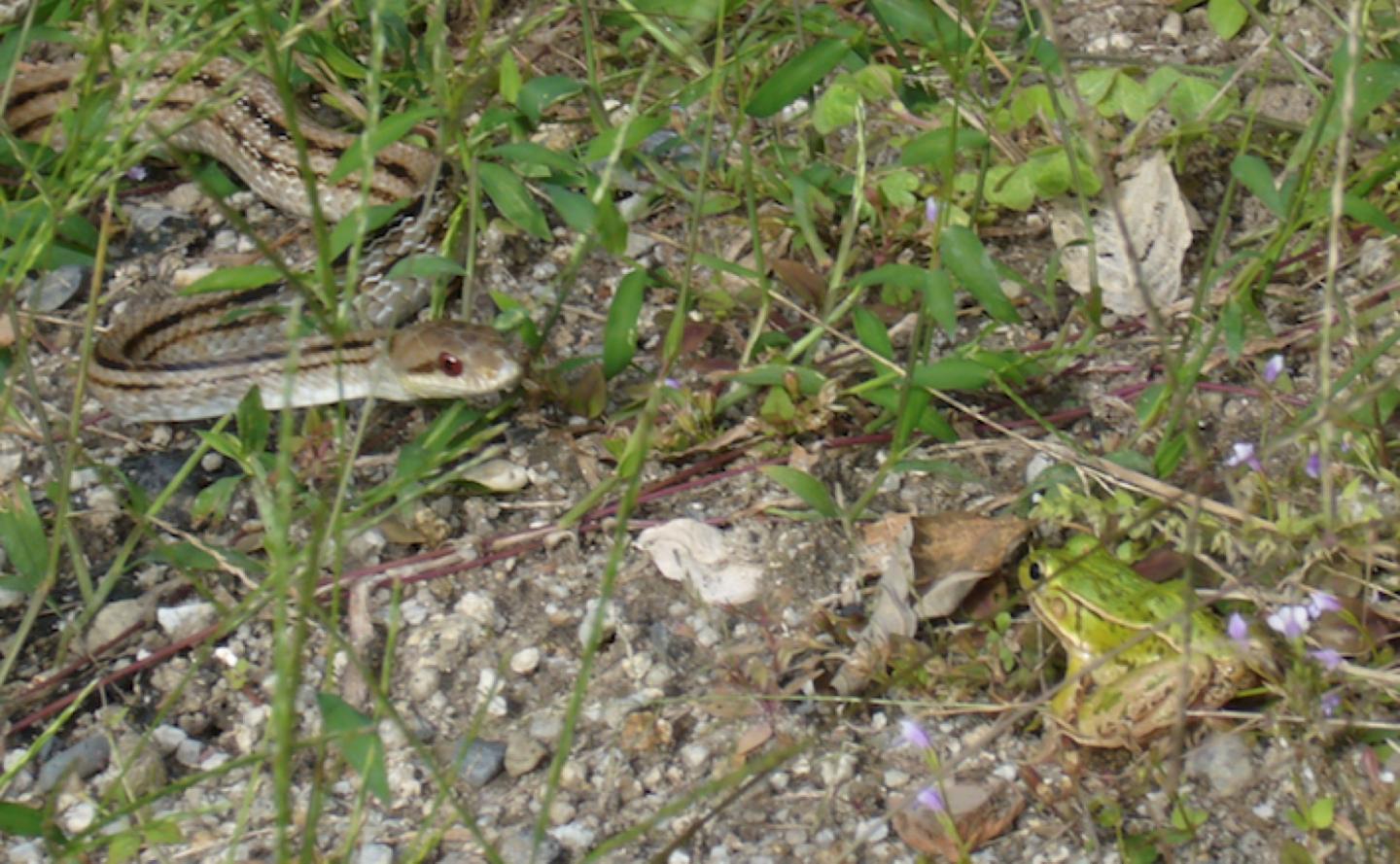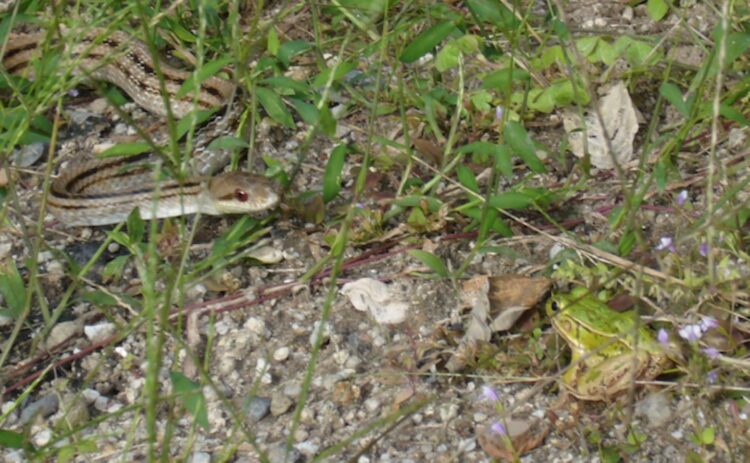Snakes and frogs appear to anticipate each other

Credit: Kyoto University/Nozomi Nishiumi
Kyoto, Japan — ‘Like a frog stared down by a snake’, goes an old Japanese expression, descrbing an animal petrified with fear.
However, it now seems that this freeze in action may not be about fear at all, but rather a delicate waiting game of life and death.
A new report from researchers at Kyoto University’s Graduate School of Science shows that this common interaction is all about patience, with each animal waiting for and anticipating its opponent’s actions.
“When predator and prey face each other, it is generally thought that the initiator has the advantage that would mediate successful capture or escape,” explains Nozomi Nishiumi, corresponding author of the report published in the Canadian Journal of Zoology.
“However, in cases involving snakes and frogs, they occasionally move extremely slowly — or almost not at all. It looks like they purposely avoid taking preemptive action.”
Nishiumi, together with colleague Akira Mori, examined how the animals’ behaviors affected the consequences of their interaction by focusing specifically on the kinematics of the snakes’ strikes and the frogs’ flight behavior.
The team analyzed the movement patterns of the Japanese striped snake, Elaphe quadrivirgata, and the black-spotted pond frog, Pelophylax nigromaculatus, both in the field and in staged encounter experiments.
“In the staged encounters we wanted to look at the disadvantages of preemptive actions by analyzing the kinematic characteristics of each animal’s movements,” explains Nishiumi.
“The field observations, on the other hand, were designed to follow the consequences of the animals’ actions and survival.”
The team found that the counteractions of each animal were often effective because the initiator’s actions were difficult to change once started. For example, if the snake initiated a strike action first, the frog would evade the attack because the trajectory of the strike could not be changed mid-movement, allowing the frog to escape safely while the snake spent time resetting its lunge posture.
Alternatively, if the frog first attempted an escape, the snake would start lunging immediately, and occasionally be able to adjust its strike direction in anticipation of the frog’s direction of movement.
“The efficacy of this waiting tactic depends on the distance between them: the closer they are the less likely the counteraction succeeds,” continues Nishiumi.
“In this regard, when approaching this critical distance, the animals appropriately switch their behaviors from waiting to taking action.”
These results suggest that a game of patience occurs between the animals, providing insight on predicting the decision-making of predators and prey.
###
Video Link
https:/
The paper “A game of patience between predator and prey: waiting for opponent’s action determines successful capture or escape” appeared on 10 March 2020 in the Canadian Journal of Zoology, with doi:10.1139/cjz-2019-0164
About Kyoto University
Kyoto University is one of Japan and Asia’s premier research institutions, founded in 1897 and responsible for producing numerous Nobel laureates and winners of other prestigious international prizes. A broad curriculum across the arts and sciences at both undergraduate and graduate levels is complemented by numerous research centers, as well as facilities and offices around Japan and the world. For more information please see: http://www.
Authors: Nozomi Nishiumi, Akira Mori
Contact: Nozomi Nishiumi PhD
National Institute for Basic Biology
5-1 Higashiyama, Myodaijichou, Okazaki, Aichi 444-8787, Japan
ph +81-564-59-5596
[email protected]
Media Contact
Raymond Kunikane Terhune
[email protected]
Related Journal Article
http://dx.





